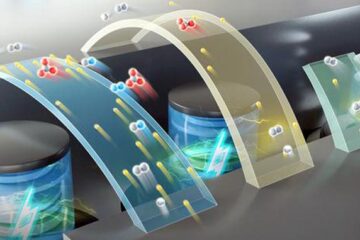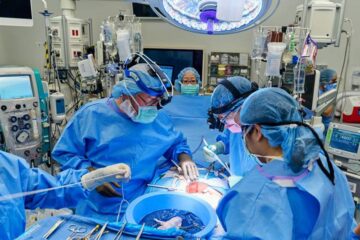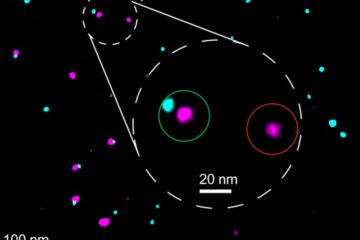Researcher From The Biscay Dolphin Research Programme On Hand For Whale Rescue Attempt In The Thames

The initial excitement from sightings of at least one 17 – 18 foot northern bottlenose whale in the Thames in London turned to drama as the animal continued to be sighted and finally stranded. Emma Webb, a senior researcher from the Biscay Dolphin Research Programme (BDRP) and a volunteer marine medic for the British Divers Marine Life Rescue Service (BDMLR) was on site participating with the rescue attempt.
Following an update from BDMLR headquarters regarding two nocturnal strandings of the animal near Battersea, Emma headed for Albert and Vauxhall bridges on Saturday morning where the animal was at risk of stranding again. The whale was surfacing normally at this time, but the BDMLR team wanted to beach the animal safely in order that an inflatable pontoon could contain it and prevent it from injuring itself. However, the whale started heading up the river and beached itself on the south bank of the river just past Battersea Bridge.
Once stranded, the medics including Emma went into action applying water to the whale’s skin and maintaining moisture levels around the eyes and blowhole with lubricant. The sheer size of the whale required some improvisation with pontoons, but these constrained the whale and allowed Dr Paul Jepson, the on site vet, to start his assessments of the whale whilst the team continued their efforts to keep the animal comfortable – this seemed to work, as its breathing remained calm and steady.
The decision was taken to float the whale to a waiting barge for transport and a full health assessment, so the pontoons were attached to two rigid inflatables (RIB’s) and moved very slowly towards the barge as the crowds cheered. The pressure waves created by the motion of the ribs threatened to drown the whale and the medics needed to sit on the pontoons trying to ensure the whale wasn’t crushed.
Once at the barge, the strong currents threatened to dislodge the slings from under the whale which needed to be positioned correctly to avoid injuring it during lifting. With some effort, this was achieved and the whale lifted safely onto the barge. Emma then said her goodbyes and stroked the whale’s dorsal fin one last time before leaving the team to continue their journey. Later, she was informed of the unfortunate demise of the whale.
The ongoing research of the Biscay Dolphin Research Programme has recorded this species on a number of occasions over the last 10 years, initially in association with the deep water canyons to the north of the Spanish coast. In recent years, sightings in this area have been rare, but adults and associated calves have been seen on occasion along the continental slope waters of the northern Bay of Biscay.
Whilst the animals are not a frequent sighting, the waters of this unique area of the World are certainly within the natural habitat range for this species and other beaked whales including Cuvier’s Beaked Whale, Sowerby’s Beaked Whale and True’s Beaked Whale.
In September 2003, BDRP sighted a single northern bottlenose whale in the shallow waters of the English Channel. During December of the same year, a thin adult northern bottlenose whale stranded on rocks near Bovisand in Plymouth. The animal was freed and swam away. It is uncertain whether the presence of these whales in this region was part of a natural migration deviation or due to sickness / disorientation of the individual.
It is possible that the individual(s) seen in the Thames had accidentally entered the shallow waters of the North Sea on a seasonal southern migration which would normally follow the deeper waters to the north and west of Scotland. This ‘wrong turn’ is likely route that other deep water cetaceans such as the Sperm Whale probably follow when they occasionally strand in the southern North Sea. It is also conceivable that the animal entered the shallow waters of the English Channel on a northern migration which would normally follow the slope waters to the west of Ireland – which ever route was taken, it was well out of the species preferred habitat and natural range.
Like other beaked whales, sightings of this species are rare due to the relatively short periods of time they spend on the surface and because their natural habitat is primarily found far from shore.
Media Contact
All latest news from the category: Life Sciences and Chemistry
Articles and reports from the Life Sciences and chemistry area deal with applied and basic research into modern biology, chemistry and human medicine.
Valuable information can be found on a range of life sciences fields including bacteriology, biochemistry, bionics, bioinformatics, biophysics, biotechnology, genetics, geobotany, human biology, marine biology, microbiology, molecular biology, cellular biology, zoology, bioinorganic chemistry, microchemistry and environmental chemistry.
Newest articles

High-energy-density aqueous battery based on halogen multi-electron transfer
Traditional non-aqueous lithium-ion batteries have a high energy density, but their safety is compromised due to the flammable organic electrolytes they utilize. Aqueous batteries use water as the solvent for…

First-ever combined heart pump and pig kidney transplant
…gives new hope to patient with terminal illness. Surgeons at NYU Langone Health performed the first-ever combined mechanical heart pump and gene-edited pig kidney transplant surgery in a 54-year-old woman…

Biophysics: Testing how well biomarkers work
LMU researchers have developed a method to determine how reliably target proteins can be labeled using super-resolution fluorescence microscopy. Modern microscopy techniques make it possible to examine the inner workings…





















